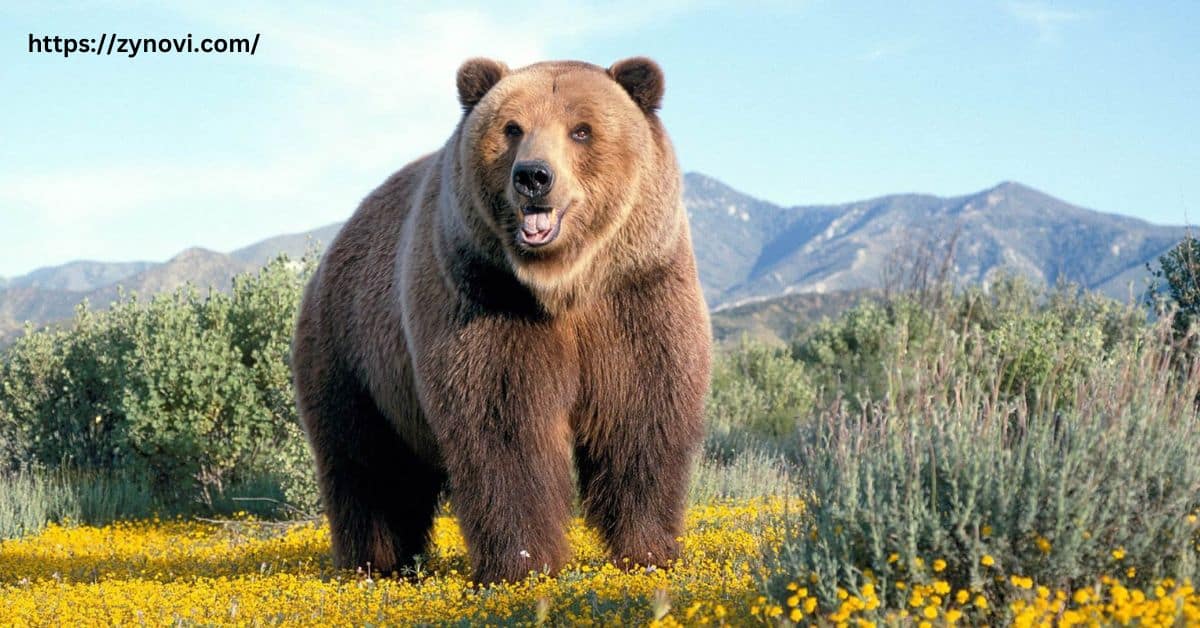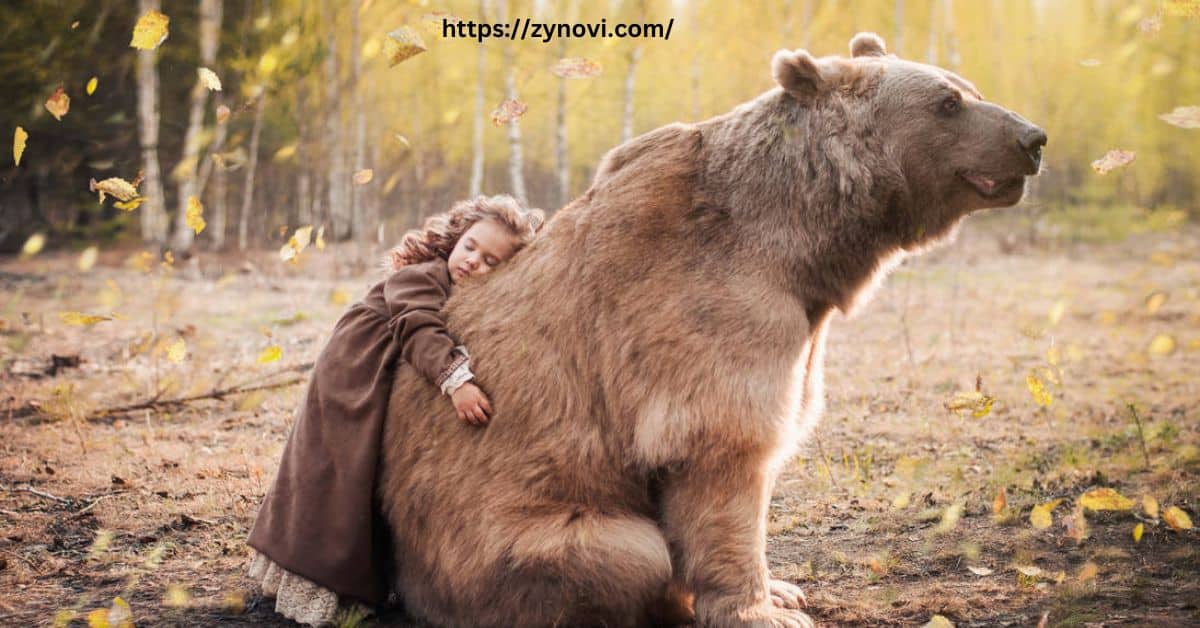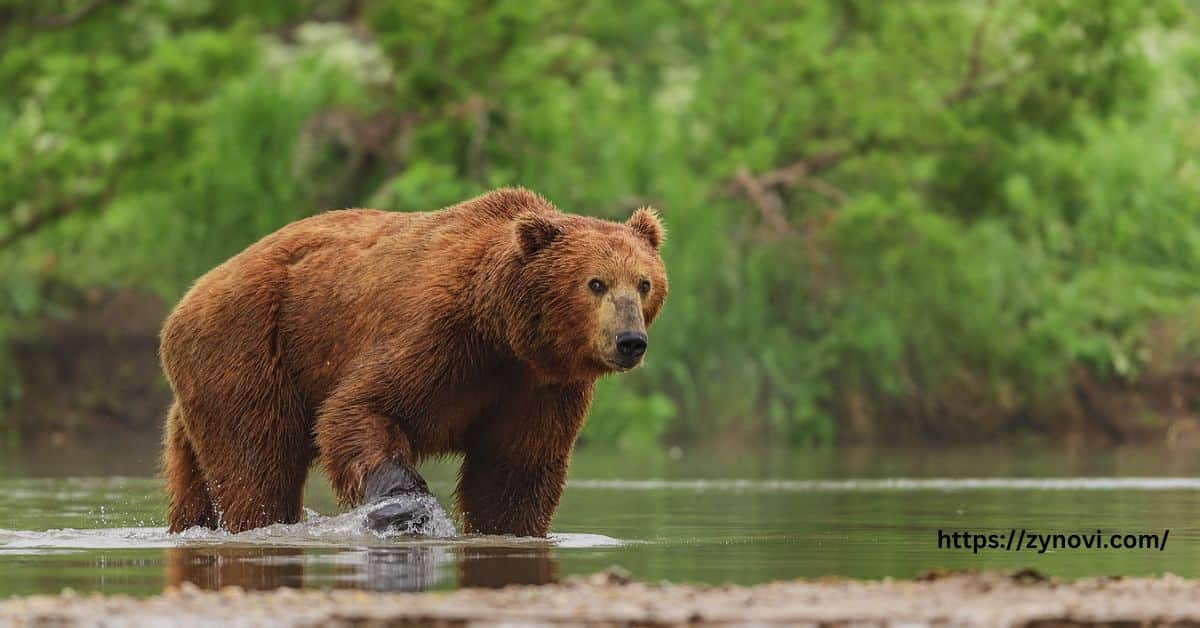Do bears attack humans? They rarely attack humans, and encounters can be avoided with proper precautions and understanding of bear behavior.
If you’ve ever hiked through bear country or live in an area with bear sightings, this question might have crossed your mind. While bears are often portrayed as aggressive predators, the reality is much more complex, and the chances of an attack are far lower than most people think.
In this article, we’ll jump deep into bear behavior, the real risks, and how you can stay safe in bear habitats. By the end, you’ll have all the facts to ensure your outdoor adventures remain exciting and not dangerous. Ready to find out more? Keep reading!
Types of Bears and Their Habitats
Before diving into bear attacks and how to prevent them, it’s important to understand the different bear species and where they live. Each species has distinct characteristics and behaviors, making certain species more likely to interact with humans.
Overview of Bear Species
There are eight bear species in the world, with four major types that are more commonly found in human-populated areas:
- Grizzly Bears: Known for their shoulder hump, grizzly bears are often larger and more aggressive than black bears. They are native to North America and can be found in Alaska, the Rocky Mountains, and parts of Canada.
- Black Bears: Black bears are more widespread in North America, with varying coat colors ranging from black to brown, cinnamon, and even blond. They are generally less aggressive than grizzlies and are more adaptable to human environments.
- Polar Bears: In the Arctic regions, polar bears reign as the ultimate predator. With thick fur and a layer of blubber for insulation, they have adapted to cold climates and primarily hunt seals.
- Asian Black Bears: Found in the Himalayas, China, and parts of Japan, these bears are similar to black bears in North America but tend to be more reclusive.
Geographic Distribution of Bear Species
The geographic distribution of these species is a reflection of their adaptations. Each species thrives in specific environments, from the temperate forests of North America to the icy wilderness of the Arctic.
| Bear Species | Geographic Range | Habitat Type |
|---|---|---|
| Grizzly Bears | North America (Alaska, Canada) | Forests, Mountains |
| Black Bears | North America, parts of Europe | Forests, Urban Areas |
| Polar Bears | Arctic Regions, Northern Hemisphere | Icy, Coastal Areas |
| Asian Black Bears | Himalayas, China, Japan | Forested Mountains |
Differences in Behavior Among Bear Species
Bear behavior differs greatly across species, largely due to their environments and diets.
Grizzly bears are highly territorial and exhibit maternal aggression, especially when protecting their cubs or food sources. They are also more prone to defensive behaviors if they feel threatened.
In contrast, black bears are generally more curious and shy, often avoiding human interaction when possible. However, if startled or hungry, they may act unpredictably.
Polar bears, as apex predators, have a more predatory nature and often engage in scavenging behavior. Their diet, primarily consisting of seals, can make them more inclined to see humans as potential prey, posing a greater threat in certain circumstances.
Do Bears Naturally Attack Humans?

Do bears Eat Humans? Understanding bear behavior is crucial when considering whether bears naturally attack humans. While most bear species are not inclined to hunt humans, attacks can occur due to a variety of reasons.
Understanding Bear Behavior
Bears are naturally omnivorous (grizzly and black bears) or carnivorous (polar bears), which influences their interactions with humans.
Black bears are often more inclined to avoid humans, but they can become aggressive if they feel threatened, especially if they are protecting their cubs or food.
Grizzly bears, on the other hand, are more likely to engage in defensive reactions if they feel threatened.
Polar bears, with their opportunistic feeding behavior, may attack if they perceive humans as a potential food source.
Myths vs. Facts About Bear Aggression
There are numerous myths surrounding bear aggression, but the truth is that most bear attacks are preventable. Here are some common misconceptions and the facts behind them:
- Surprise Encounters: One common myth is that bears are always aggressive. In reality, bears tend to avoid humans. However, if a bear is startled at close range, it may react defensively, believing it’s in danger. This is often a misunderstanding due to the bear’s instinct to protect itself.
- Protection of Cubs or Food: Another myth is that bears attack out of pure aggression. The fact is, bears are highly protective of their young or food sources. If a bear feels its cubs or meal is threatened, it will often act aggressively to defend them. This maternal aggression is instinctual and not meant as a direct attack on humans.
- Food Scarcity: A lesser-known myth is that bears are always looking to attack humans for food. In reality, food scarcity can drive bears to seek food from humans, particularly in areas where natural food sources are limited. If humans unknowingly leave food unsecured, it can attract bears, which may increase the likelihood of an encounter or even an attack.
Common Reasons for Bear Attacks
While rare, bear attacks can occur under certain conditions. It’s essential to understand the common causes of these attacks to minimize risk.
Human Encroachment on Bear Habitats
As human populations continue to grow, urban sprawl and expansion into bear habitats have significantly increased the chances of human-bear interactions.
Deforestation, industrial development, and the creation of tourist areas in previously untouched territories disrupt natural bear environments, forcing them to adapt to human proximity.
This often leads to more frequent encounters, as bears seek food sources in urban areas or wander into human settlements, raising the risk of conflict and aggression.
Bears Protecting Their Young or Food Sources
Mother bears are extremely protective of their cubs, and they will often display aggression if they perceive a threat to their young. A bear mother’s instinct is to ensure the safety of her offspring at all costs, which can lead to defensive attacks if a human or another animal gets too close.
Likewise, bears can become aggressive when defending their food sources, especially in areas with food scarcity. When resources are limited, a bear will fiercely protect its meal to ensure survival.
Surprising a Bear at Close Range
Surprising a bear at close range is one of the primary causes of bear attacks. If a bear feels startled or cornered without enough time to escape or assess the threat, it may charge in self-defense. This is especially true for bears that haven’t noticed the presence of a human until it’s too late.
Hikers and campers are at higher risk in dense forests or areas with limited visibility, where bears are more likely to be caught off guard.
Food Attractants and Improper Storage
Bears are naturally curious animals with an incredibly keen sense of smell, making food attractants a major factor in drawing them toward human areas.
Improper food storage is one of the leading causes of bear encounters, as unsecured food can quickly attract bears to campsites, homes, or hiking trails.
To prevent this, it’s essential to use bear-proof containers, hang food high in trees, and securely store garbage or any items that may smell appealing to a bear. Proper storage can significantly reduce the risk of bear encounters.
How to Prevent Bear Attacks

Prevention is the best strategy for avoiding bear attacks. By understanding bear behavior and following safety guidelines, you can significantly reduce your risk.
General Safety Tips for Hiking and Camping
- Make noise: Bears typically avoid humans when they hear them coming. Talking, clapping, or using bear bells helps alert bears to your presence, reducing the chances of a surprise encounter.
- Travel in groups: Bears are more likely to approach a lone hiker than a group. Stick together to reduce the risk.
- Stay aware: Watch for bear tracks, scat, or signs of food-seeking behavior. This can help you avoid areas with recent bear activity.
Proper Food Storage Techniques
- Bear-proof containers: Use bear-resistant canisters to store food while camping. These containers prevent bears from accessing food.
- Hanging food: If bear-resistant containers are not available, hang food from a tree at least 10 feet off the ground to keep it out of reach.
- Cleanliness: Always clean your campsite thoroughly. Scrub cooking utensils, dishes, and food scraps to eliminate any smells that might attract bears.
What to Do If You Encounter a Bear
- Stay calm: It’s crucial to stay composed and avoid sudden movements that might startle the bear.
- Back away slowly: Give the bear plenty of space to move away. Running can provoke the bear to chase you.
- Do not make eye contact: Direct eye contact can be interpreted by the bear as a sign of aggression, increasing the likelihood of a confrontation.
Bear-Proofing Your Camp or Home
- Install bear-resistant fencing: If you live in bear-prone areas or camp in bear habitats, setting up strong, bear-resistant fencing can help keep bears out of your space.
- Use bear-proof trash cans and containers: Always store garbage and food waste in bear-proof bins to prevent attracting bears to your campsite or home.
- Securely store attractants: Ensure that items like bird seed, pet food, and compost are stored in sealed containers to avoid luring bears into your area.
What to Do in Case of a Bear Attack

Despite all precautions, a bear encounter could escalate into an attack. Here’s how to respond if you find yourself in such a situation.
Immediate Actions During an Encounter
- Remain still: If the bear hasn’t noticed you yet, staying still can help avoid startling it and reduce the chance of provoking a defensive reaction.
- Move away slowly: If the bear notices you and isn’t charging, back away slowly, allowing the bear to feel less threatened and giving it a chance to retreat.
- Make noise: If the bear seems agitated or unsure, making loud, firm noises can help signal that you are not a threat, potentially calming the situation.
Defensive and Non-Defensive Responses
- Defensive reaction: Bears may exhibit defensive behaviors when protecting their cubs or food. In these cases, it’s best to back away and avoid any sudden movements.
- Non-defensive response: If a bear shows predatory behavior, such as stalking or hunting, fight back using any available resources, including bear spray.
When to Use Bear Spray
Bear spray is an extremely effective tool for deterring bears during an encounter, especially when used correctly. It is most effective when the bear is within 30 feet of you, as this gives you the best chance to reach the bear’s face, which is the most vulnerable area.
When using bear spray, aim directly for the bear’s face and deploy in short bursts. It creates a cloud of irritants that can stop the bear in its tracks and prevent an attack, allowing you to retreat safely.
How to Report a Bear Attack
If you or someone else is involved in a bear attack, it’s crucial to contact wildlife officials and local authorities right away. Provide as much detailed information as possible, including the location, time, and any relevant circumstances surrounding the attack.
This helps authorities assess the situation, monitor bear activity in the area, and take necessary actions to prevent future incidents. Prompt reporting can also assist in ensuring public safety and informing wildlife management practices.
FAQs
How likely would a bear attack a human?
Bear attacks are extremely rare and usually occur when a bear feels threatened, startled, or is protecting its cubs or food.
Are any bears friendly to humans?
No wild bear species are naturally friendly to humans, though some may tolerate human presence if unprovoked or habituated.
What do you do if a bear is chasing you?
Do not run; instead, use bear spray if possible and try to stand your ground while backing away slowly.
Are bears really scared of humans?
Most bears are naturally wary of humans and will avoid contact unless they feel threatened or are seeking food.
Conclusion: Do Bears Attack Humans?
In conclusion, while bear attacks on humans are rare, they can occur under specific circumstances. By understanding bear behavior, taking appropriate safety measures, and respecting bear habitats, we can reduce the risk of conflict with these magnificent creatures.
Remember that most bears are not inclined to attack unless they feel threatened or are provoked. By practicing proper food storage, making noise in bear country, and knowing how to react in an encounter, you can safely coexist with bears and enjoy the wilderness.
Stay vigilant, respect wildlife, and follow the safety guidelines outlined in this post to minimize risks and ensure your safety when venturing into bear habitats.










